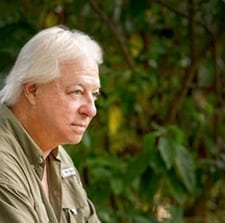Agnes Of Glasgow
November 2, 2017By Tom Poland
A Ghost Story
With Halloween memories fresh on our mind, now’s as good time as any for a ghost story. As haunted tales go, the tale I’m about to tell is not the scariest. In a way it’s a sweet tale of separated lovers. Last Thursday I had a book event in Camden, South Carolina. Afterwards, I visited Camden’s Old Quaker Cemetery. There I paid my respects to Agnes of Glasgow and her supposedly haunted gravesite. Perhaps so. Four hours after visiting it a sudden illness struck. I was sick for three days. No good deed goes unpunished they say.
Agnes of Glasgow, this figure of American folklore, a Scottish woman, really existed. This woman whose last name no one knows, 1760-1780, died when she was twenty years old. If you visit the Old Quaker Cemetery just off I-20 near Camden, you’ll see that her grave is set apart from all others. Standing over it is a green, metal marker. “Here sleeps Agnes of Glasgow, who tradition says followed her lover, of the British Army, across the ocean and through the wilderness to Camden. She was taken by death before she found him and buried here by King Haigler and his men.”
So, what is the story behind this legend? It’s a tale steeped in romance. Born in Glasgow, Scotland, Agnes came to know a British Army officer, Lt. Angus McPherson at the time of the our Revolutionary War. She fell in love with McPherson who was assigned and shipped to the South Carolina colony. Determined to join him, she stowed away on a ship bound from England to America and thus came to the Holy City, Charleston.

At this juncture, the tale gets a bit out of focus, but apparently Agnes and McPherson were in Charleston at the same time. McPherson, however, mistakenly believed his unit was assigned near Camden. McPherson must have seen combat, because Agnes heard that he may have been wounded. She left Charleston determined to make it to Camden, some 127 miles away. Her time of wandering had arrived, a journey that would end in tragedy. She wandered through towns and the wilderness looking for McPherson and anyone who might know his whereabouts. No luck, other than bad. Illness struck and she died before she could find her lover. Though some dispute it (Haigler supposedly died before Agnes came to Camden), her friend, Wateree Indian King Haigler, and his men buried her under cover of darkness.
All these many years later Agnes searches for her lover still, but only at night. Maybe I’ll visit the Quaker Cemetery one night and see what develops. Maybe on a full moon night when the stones gleam silver a beautiful woman in a ghostly white gown will float my way.

The old Quaker Cemetery itself makes for a good story. It’s a beautiful setting with its share of history and fame. You’ll find it on the opposite side of Highway 521 across from Camden’s Revolutionary War Park. Quaker settlers arrived in Camden around 1750 and chose this location as a resting place. If you visit it, you’ll find headstones dualists used as target practice in the 1800s. There, too, you’ll see the resting place of Abraham Lincoln’s brother-in-law (a Confederate doctor), a female Confederate spy, Civil War generals, and the tombstone of Richard Kirkland, “The Angel of Marye’s Heights,” a Confederate who gave water to dying Union soldiers at the Battle of Fredericksburg. Expect to see water bottles and canteens on his stone.
As for Agnes’s tombstone, visitors lay objects atop it, too. I see this tradition in many cemeteries. Visitors leave coins, stones, and other objects for various reasons. For some, it’s a way to pay tribute to the dead and a reminder that someone visited the grave. Some believe a stone placed on the grave keeps the dead from haunting the living. Maybe, just maybe, that fails to work, for people swear that Agnes roams the cemetery and has for a long time. The inscription on her stone, worn by time and the elements, reads “Here Lies The Body Of Agnes of Glasgow.” She’s been lying there 237 years now. Pay her a visit and see if illness or strange happenings afflict you.
Photography by Tom Poland
Visit Tom Poland’s website at www.tompoland.net
Email Tom about most anything. [email protected]
Tom Poland is the author of twelve books and more than 1,000 magazine features. A Southern writer, his work has appeared in magazines throughout the South. The University of South Carolina Press released his book, Georgialina, A Southland As We Knew It, in November 2015 and his and Robert Clark’s Reflections Of South Carolina, Vol. II in 2014. The History Press of Charleston published Classic Carolina Road Trips From Columbia in 2014. He writes a weekly column for newspapers in Georgia and South Carolina about the South, its people, traditions, lifestyle, and changing culture and speaks often to groups across South Carolina and Georgia, “Georgialina.”
Sign up here to start your free subscription to MidlandsLife!














